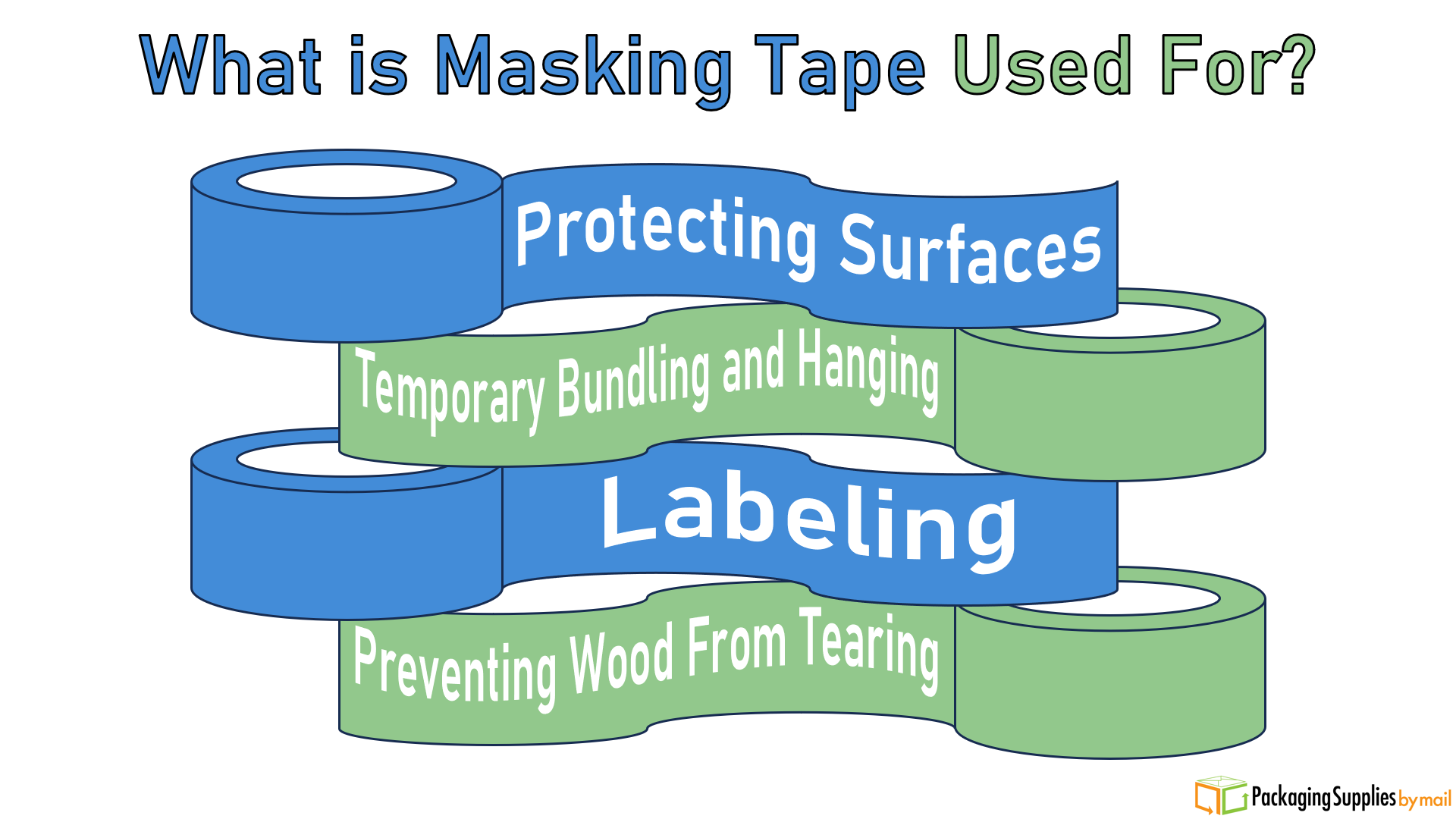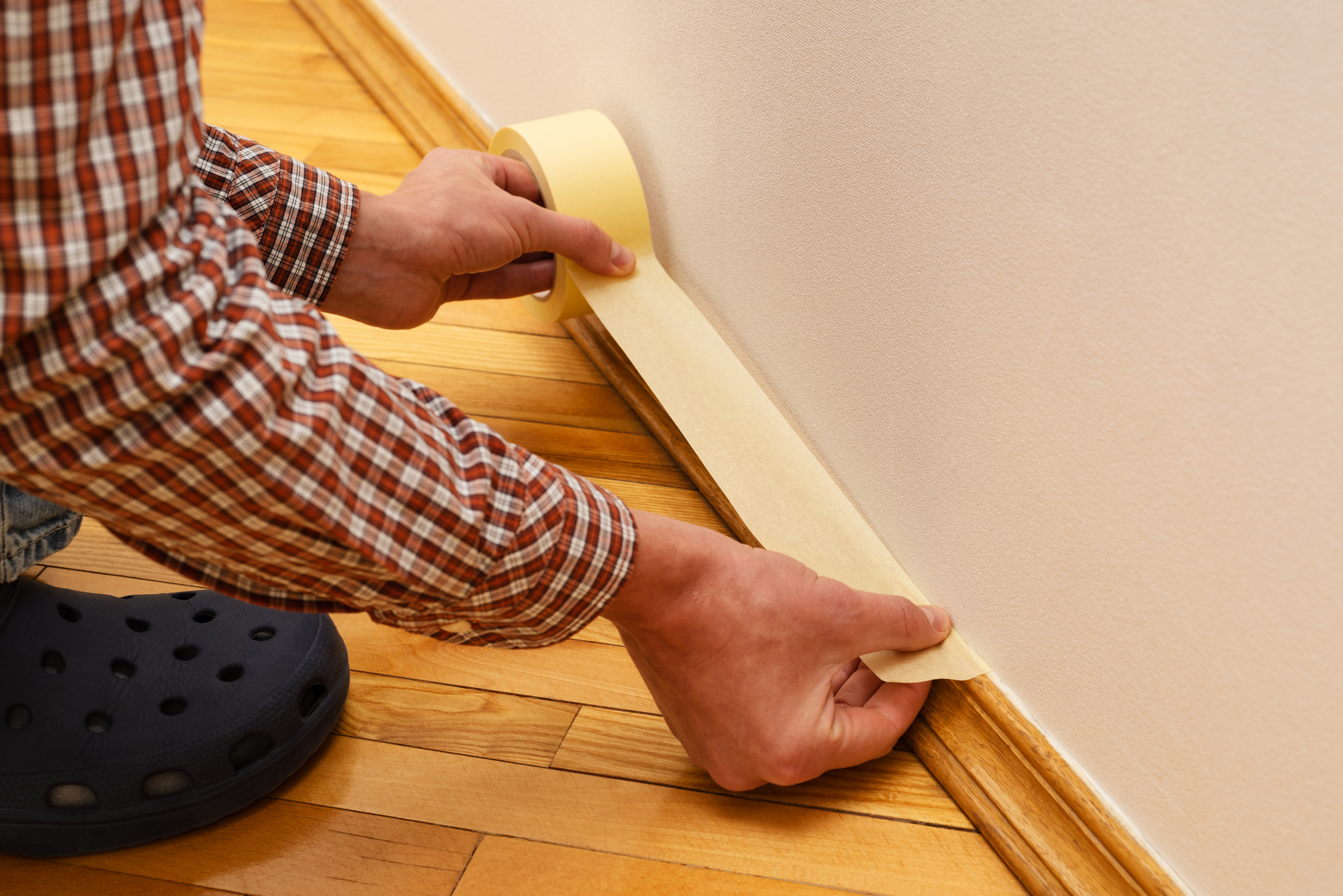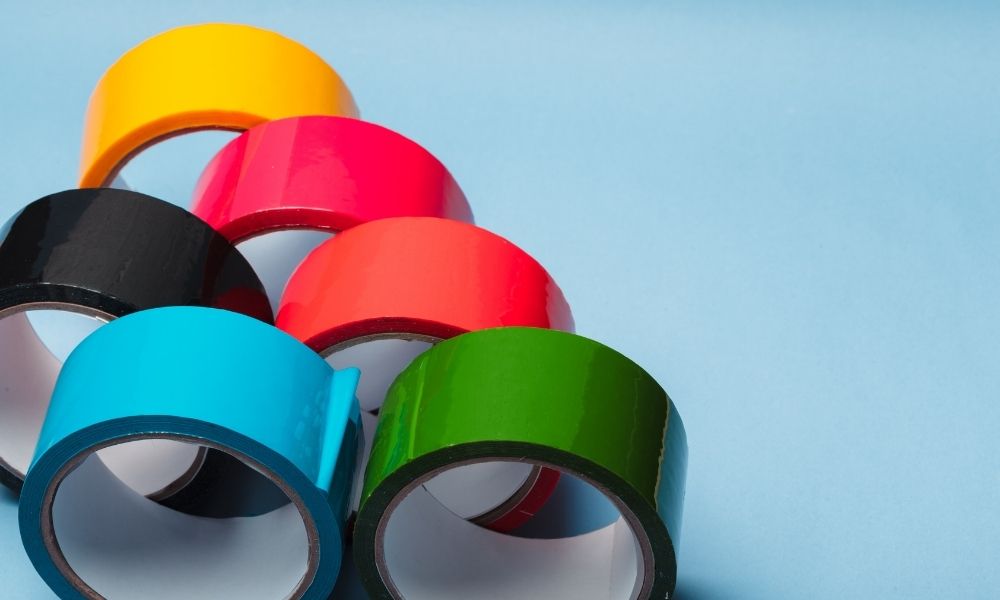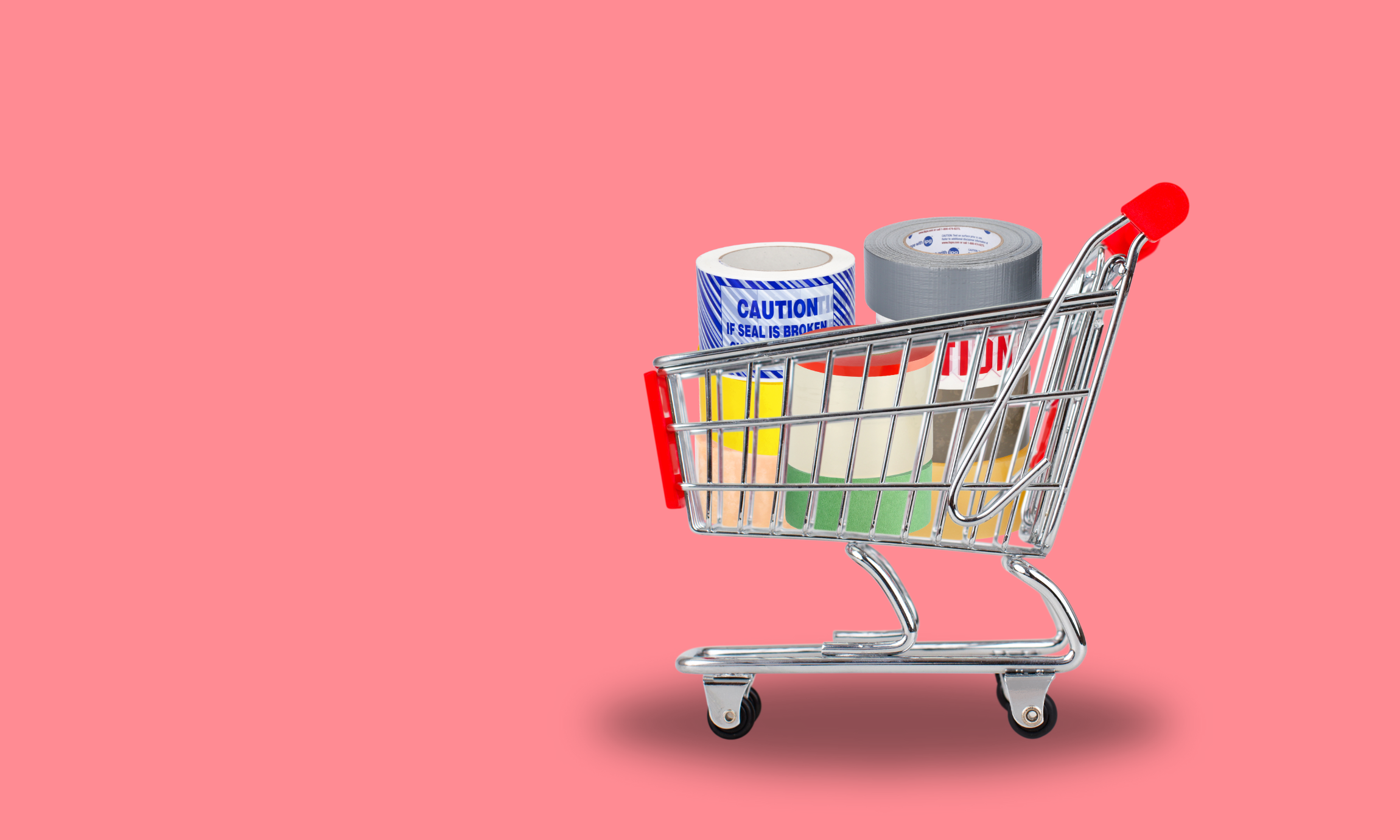Masking tape is quickly becoming one of the most popular household items, and it’s not hard to see why. This low-cost and durable material is perhaps one of the most versatile tools one can keep around their house. Artists and DIY-ers around the world seem to find newer and greater uses for masking tape, but for the sake of this article, let’s go back to basics. Today, we will be answering three of the biggest questions related to masking tape: what is it, what makes it different from painter’s tape, and what is masking tape used for?
What is Masking Tape?
Masking tape is typically made from crepe paper backing, although some masking tapes are made from alternative backing materials like polyethylene terephthalate (PET) and polyvinyl chloride (PVC). The backing material is coated with a layer of adhesive and, as a pressure-sensitive tape, sticks to surfaces with only a light application of pressure.
Manufacturers will either use a rubber adhesive for a stronger initial tack, or an acrylic adhesive for an easier release from the surface; no matter the type used, the adhesive is lightly applied so that the tape can be removed a couple of days after use without leaving behind a residue.
What is Painter’s Tape?
Painter’s tape is essentially a better version of masking tape. First, the paper backing material is thicker and more durable than standard masking tape. Second, the adhesive is strong enough to securely cling to a variety of surfaces, but also light enough that the tape can be removed after a few weeks without leaving an adhesive residue behind. As the name suggests, painter’s tape is the ideal tape for painting projects.
For more information on the differences between masking and painter's tape, be sure to take a look at our article comparing these tapes side-by-side.
What is Masking Tape Used For?
People seem to find more and more uses for masking and painter’s tape, but for the sake of simplicity, here are the most common uses of these tapes:
Protecting Surfaces
This is what people usually think of when they hear about masking tape. Masking tape’s easy tearing, fast cling, and residue-free removal are specifically designed to protect surfaces during painting. Simply cover the surface you want to avoid painting with a layer of masking tape, then gently remove it when you’ve finished painting. To prevent residue from being left behind after removal, make sure you remove the tape a couple of days to weeks after application. Painter’s tape lasts longer, leaving no residue behind up to three weeks after being applied.
Masking tape doesn’t just protect surfaces during painting. It also helps with designs! Painters can carefully place their tape so that it creates clean, straight lines upon removal. Furthermore, painters can cut out custom designs in the tape to create a paintable stencil. Masking tape is not only a help when painting walls and cabinets, it’s also a smart tool for artists to create unique designs on canvases, walls, and other surfaces.
Temporary Bundling and Hanging
Are you in the middle of a move and you need to keep some loose items together? Bundle them together with some masking tape! Gather up your pillows, hanging photos, golf clubs, or other loose articles and wrap them up in a couple of layers of masking tape. The tape won’t hold forever, but it will last long enough for a quick move. Additionally, masking tape can be used in a pinch to temporarily seal cartons and boxes.
Looking to hang a poster or some decorations for a short while? Hang them with masking tape! The tape may not be able to hold heavier objects, but a lightweight poster can easily be set in place with some masking tape. Just make sure it doesn’t stay up for more than a few days to weeks if you want to remove it residue-free.

Labeling
Why spend the money on a label maker when you can simply get yourself a roll of masking tape and a permanent marker? In fact, creating a label with masking tape is as easy as tearing off a strip, sticking it on the surface needing to be labeled, and writing your message.
Masking tape comes in a variety of bright colors for enhanced visibility. Masking tape labels can be easily removed with no residue a few days after application, but can also be kept in place as a more permanent label; after a few weeks, however, the adhesive will set in place and may leave some residue behind upon removal.
Preventing Wood From Tearing
Anyone who works in carpentry will tell you how frustrating it is when the edges of wood get torn up when put through a saw; this causes the lumber to have a jagged and disheveled appearance. Keep your wood from tearing by applying a strip of masking tape on top of the area to be cut. The masking tape keeps the wood fibers in place and prevents tearing and splitting when cut by a saw. Once the wood is sawn, simply remove the masking tape and admire the clean edges of your lumber.
Other Uses
As this article has constantly alluded to, people have found a multitude of uses for masking and painter’s tape. Outside the four previously mentioned, masking tape is also used for:
DIY Projects
Arts and Crafts
Protecting Sharp Edges
Cleaning/Lint-Rolling
Marking Off Depth on Drill Bits
Final Thoughts
And that’s our intro to masking tape! Both masking and painter’s tape are easy to tear, place, and remove, making them some of the most versatile household objects to keep around. And yet, this article has only scratched the surface with this popular and convenient kind of tape. If you’re interested in learning more, we recommend this article from the IQS Directory that goes into great detail on masking tape: how it’s made, the different materials used to make it, common applications of masking tape, and more.
While you're here, be sure to check out our wide selection of tapes, including masking and painter's tape. PackagingSuppliesByMail offers free shipping on all our tape products, so you can get yourself an order of masking tape and see what this versatile tool can do for you.









